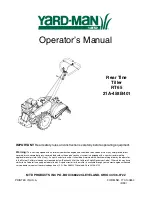Summary of Contents for NESLAB HX 150
Page 9: ...9 Troubleshooting Chart Weak cooling ...
Page 10: ...10 Troubleshooting Chart Weak cooling continued ...
Page 11: ...11 Troubleshooting Chart Refrigeration pressures ...
Page 42: ...42 ...
Page 47: ...47 ...
Page 51: ...51 ...



































